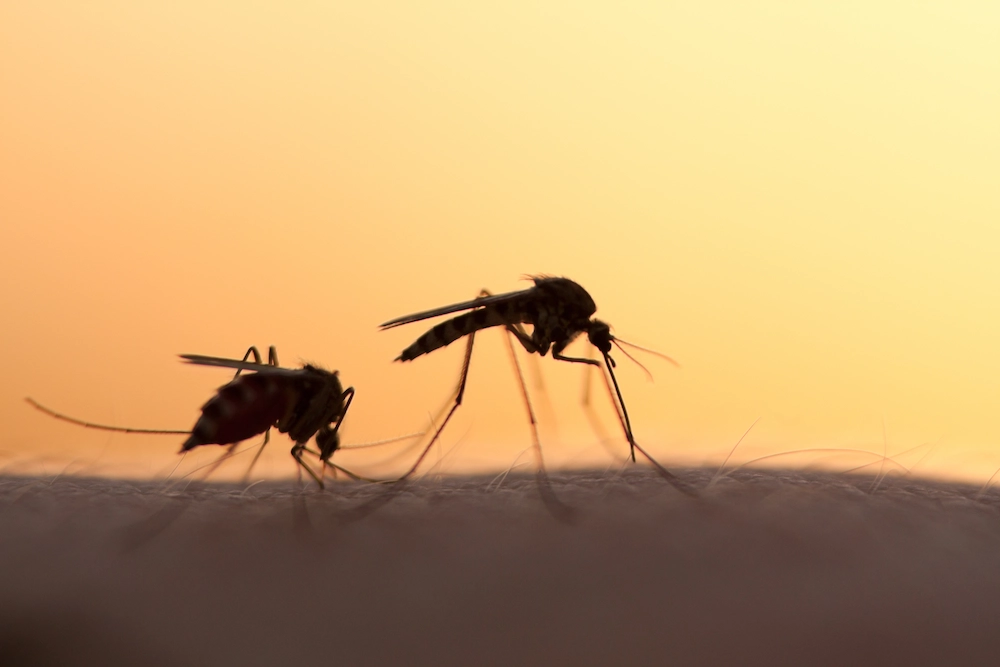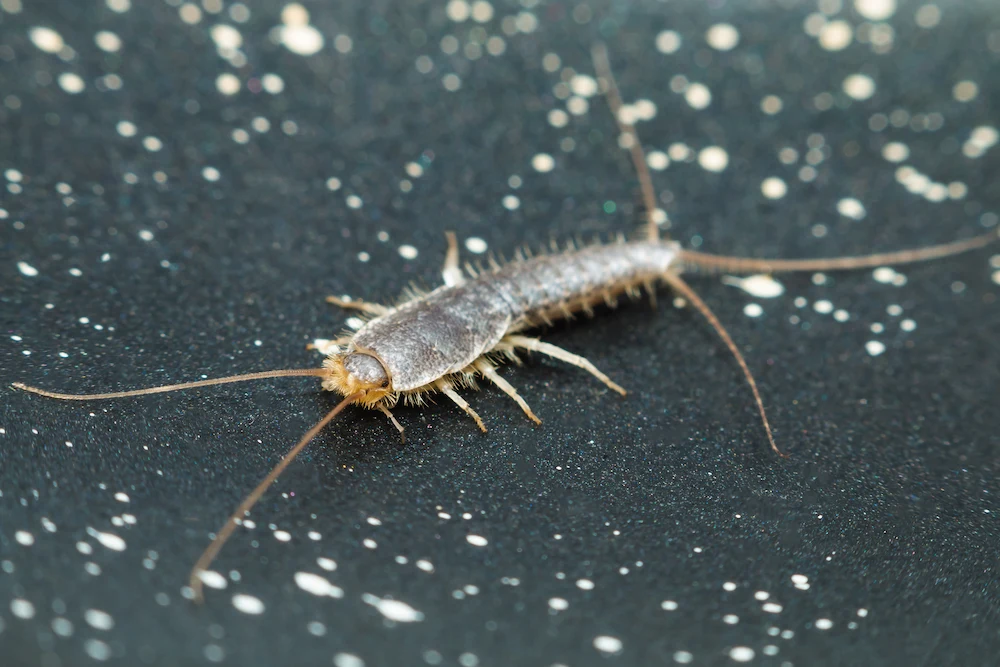Summary: Mosquito bites can potentially be more than just itchy welts. This blog explores mosquito-borne diseases, including the transmission process, common PNW diseases, symptoms, and prevention methods for bites. Pointe Pest Control solves pest issues as efficiently as possible.
Today (August 20th) is World Mosquito Day, and it makes us think about the health risks of these bloodsuckers. Besides the itchy welts, mosquitoes can give us harmful pathogens that cause diseases.
Contrary to popular belief, mosquitoes don’t transmit diseases by injecting the host with infected blood. How do those pathogens go from a host to a mosquito to a new host? It’s all in the saliva…
Let’s learn more about the basic concept of mosquito-borne diseases before we discuss 3 of the most common ones in our region and the best mosquito prevention tips.
The Basic Process
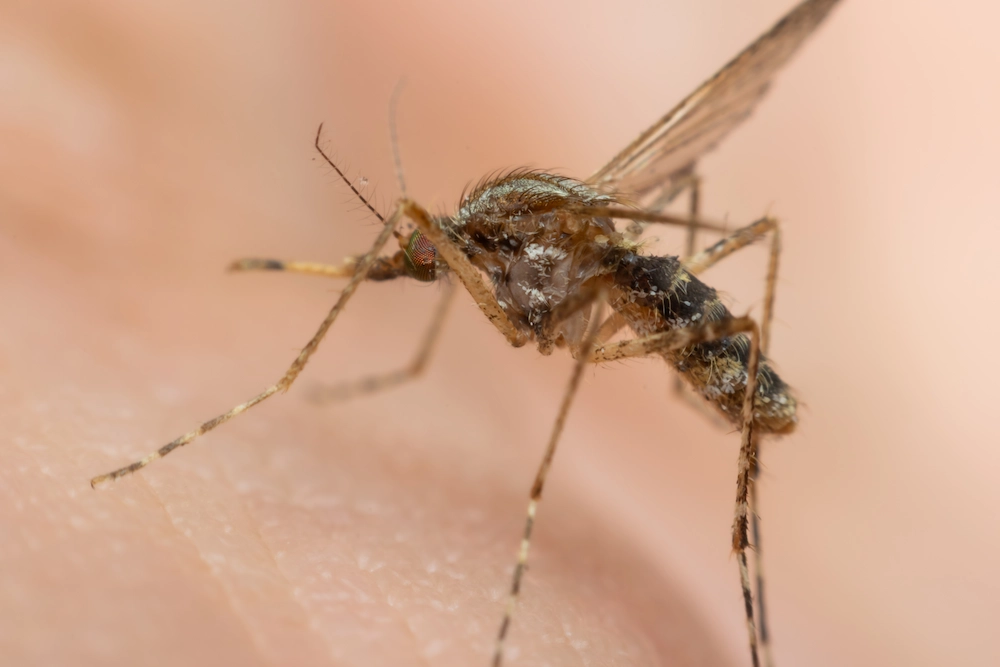
Mosquito-borne diseases occur when a mammal is bitten by an infected mosquito and gets sick in the following days. But how does the mosquito get infected in the first place? We actually know quite a bit about this process, thanks to a massive amount of scientific research that’s gone into it in hopes of learning more about these deadly diseases.
This is how mosquitoes become infected:
- The mosquito bites an infected mammal and ingests the germ.
- The germ (aka the virus and parasites) multiplies and moves from the mosquito’s gut to its body.
- The germ then moves into the mosquito’s salivary glands, where it’s ready to be transmitted through the mosquito’s saliva. The whole process of the germ’s move takes 2 to 3 weeks.
- The germ is transferred via the mosquito’s saliva into the blood of the next mammal the mosquito bites. The mosquito does NOT inject infected blood.
- The person or animal can get sick in the weeks following the bite. Physical symptoms are a sign that the mammal has a mosquito-borne diseases.
American Mosquitoes
There are only 3 species in the United States that can transmit diseases: Aedes, Culex, and Anopheles. All other U.S. mosquitoes are “nuisance” mosquitoes that can’t spread pathogens. That’s why, when we hear about the annual millions of deaths from mosquito-borne diseases, most of them are from countries with limited or no access to modern medicine.
That said, mosquito-borne diseases still exist in the U.S. The efficacy of the transmission depends on the germ type, mosquito’s age, environment, and amount of germ. These often align more in tropical or subtropical countries, which is why some of the recent U.S. reports of mosquito-borne diseases are from people who traveled to those countries.
Now, let’s get into the 3 main mosquito-borne diseases in the Pacific Northwest. There are others outside this list, like Zika virus and dengue fever, that could be transmitted here. We’re just focusing on these 3 for now.
Malaria

Symptoms: fever, headache, body aches, chills, fatigue, nausea
This is probably the mosquito-borne disease you’ve heard the most about, as it used to be a major concern in the United States. Today, there are about 2,000 reported cases of malaria in the U.S. every year, mostly from people who traveled to mosquito-heavy countries.
Anopheles mosquitoes are the nighttime feeders responsible for malaria. They mostly live in tropical and subtropical regions, so they’re rarer around here. Malaria is not contagious, as it’s only transmitted through bites. Immediate treatment is crucial because malaria gets worse with time. Untreated malaria can eventually lead to a coma.
West Nile Virus
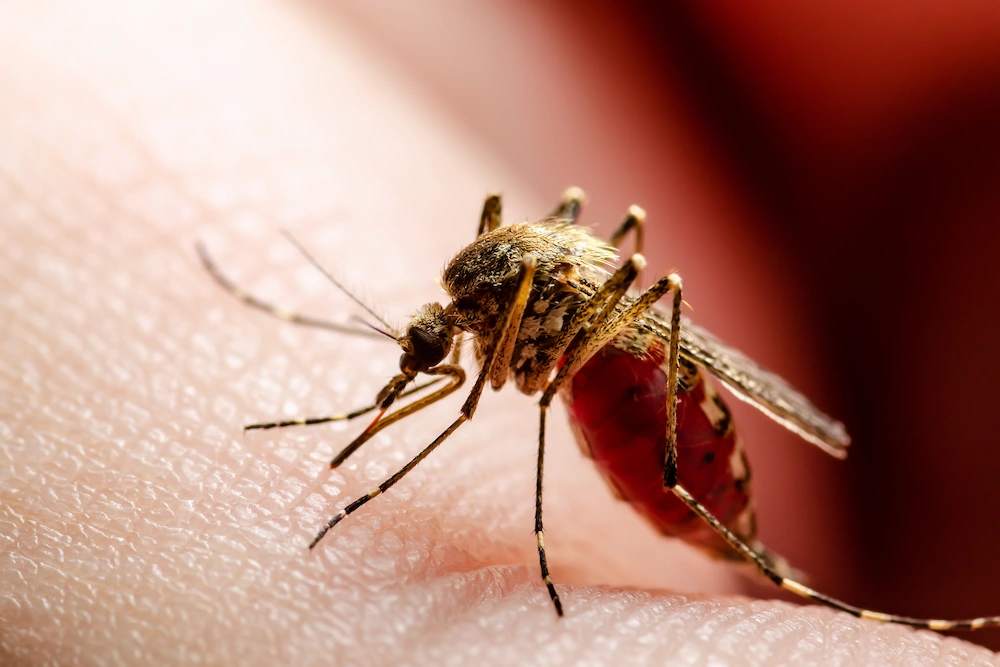
Symptoms: fever, headache, body aches, vomiting, rash, joint pain
Today, this is regarded as one of the most common mosquito-borne diseases in the United States — including the Pacific Northwest. Most people don’t even have symptoms or lasting health effects, so there still aren’t a massive number of serious cases in the country.
West Nile virus affects the nervous system and results in flu-like symptoms (when it shows symptoms). Culex mosquitoes spread this disease, and they feed at dusk and nighttime. Animals, like birds and horses, can also be impacted by West Nile virus. Cases spike from late summer through early fall because it’s mosquito season.
Western Equine Encephalitis
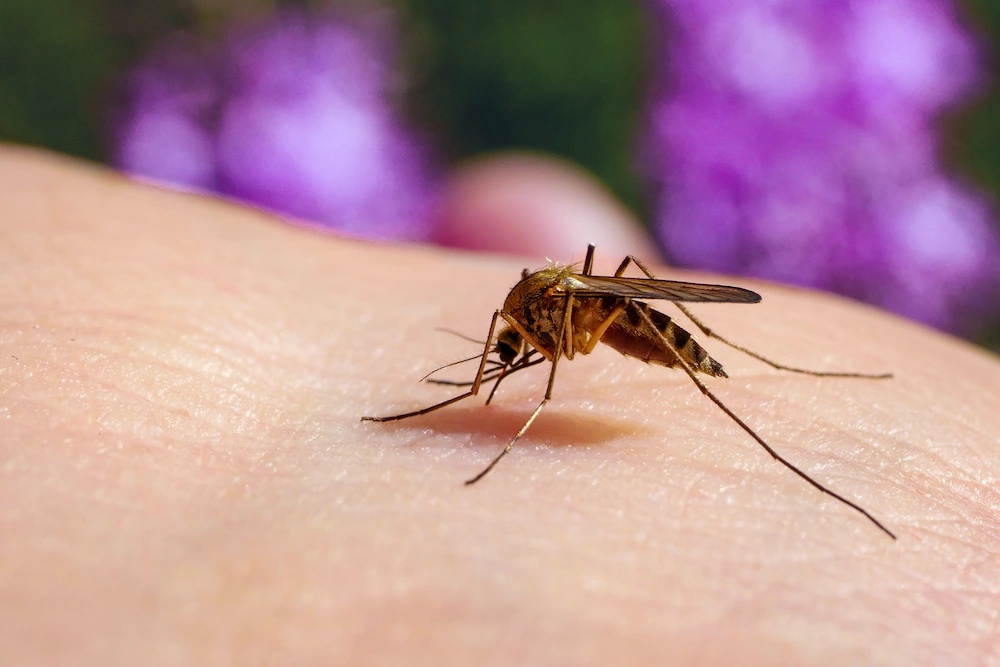
Symptoms: fever, headache, body aches, weakness, fatigue
Western Equine Encephalitis (WEE) is more common in our region, but Eastern Equine Encephalitis (EEE) is a related disease with very similar symptoms. Both are transmitted by the Culex mosquito, which feeds from dusk through the night.
According to the CDC, there haven’t been any human cases of WEE in the U.S. since 1999. The most recently reported cases were in South America. Today, WEE and EEE are both known for impacting horses more than humans. It’s still entirely possible for people to have WEE, and these cases are just assisted by pain control and monitored for worsening symptoms.
When Should I See a Doctor?
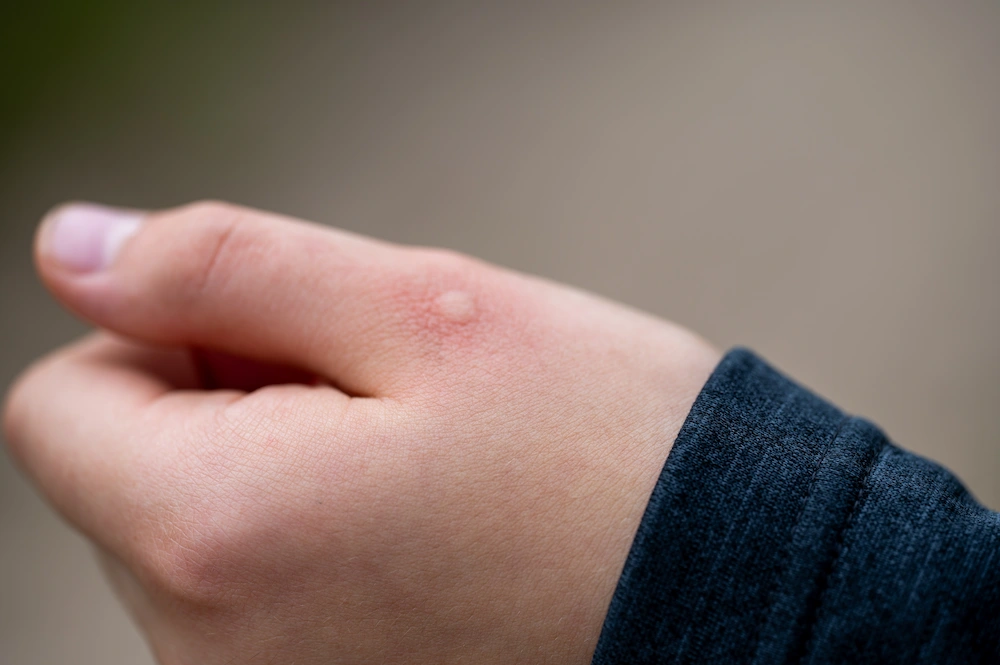
We know reading about mosquito-borne diseases isn’t a very heartwarming topic. This is all in the interest of staying vigilant against mosquitoes during their active season. Most U.S. mosquito bites don’t result in a disease, so this (thankfully) isn’t a daily worry for us.
If these diseases aren’t very common in our country, how do you know when to see a doctor for a mosquito bite? All of these diseases are treatable with immediate treatments and monitoring, so it’s better to get medical attention sooner than later.
It’s not necessarily “good” news, but one of the reasons why mosquito-borne diseases are treatable with modern medicine is because the symptoms are very clear. You’ll know if you’re infected because you’ll start having flu-like symptoms after you’re bitten.
These symptoms are your cue to seek medical attention. When you’re there, detail all of your symptoms and how long they’ve lasted. Make sure to note that you were bitten by a mosquito before your symptoms appeared so they can properly treat you.
We want to note that certain populations are more vulnerable to the serious effects of mosquito-borne diseases. Those with compromised immune symptoms or who are elderly, pregnant, or under 2 years of age can have more severe symptoms. Anyone in these groups should take extra care to avoid being bitten by mosquitoes.
How to Prevent Mosquito Bites

Even without the threat of a mosquito-borne disease, mosquito bites aren’t a fun souvenir from our outdoor activities. They’re itchy, swollen, and irritated until they finally heal. It’s ideal to prevent these bites from happening in the first place, which is where we come in.
The most efficient ways to prevent mosquitoes are:
- Remove stagnant water — Mosquitoes spend their first 3 life stages in still water. Eliminate all standing water from your yard by emptying out full containers and plant trays.
- Clear out gutters — Clogged gutters attract mosquitoes with the stagnant water and natural debris. Remove these clogs with a shop vacuum or your hands (wearing utility gloves).
- Wear bug spray — If you’re spending a lot of time outside, apply your EPA-approved bug spray of choice. It needs to have DEET, picaridin, or oil of lemon eucalyptus to be effective.
- Wear lighter colors — Mosquitoes find us more easily when we wear dark-colored clothing. Try sticking with light colors if you feel like a mosquito magnet.
- Check screens — These pests can slip through small gaps to invade our homes. Inspect your window/door screens and weatherstripping for gaps and replace loose ones.
- Fix leaks — This relates to the point about stagnant water earlier. If any fixtures in your house or yard (pipes, faucets, hoses, sprinklers) are leaking, get them fixed ASAP.
- Avoid strong scents — Flowery scents attract mosquitoes since they also feed on nectar. Avoid using flowery perfumes and lotions before going outside. Opt for bug spray instead!
Are You in Northern Idaho or Olympia, WA? We Have the Mosquito Solutions for You!
Mosquitoes are one of the most infamous summer pests for a reason. They continue to reproduce if they get blood and the weather is warm, which is why their breeding season continues through October.
At Pointe Pest Control, our licensed technicians stop mosquitoes in their tracks with our advanced solutions. From April through October, we use power misters to treat and prevent mosquitoes. Once the spray is dry, it’s safe for people and pets.
If you’re in Northern Idaho or Olympia, Washington, contact us to learn more about our mosquito services. And for all of our servicing areas, click here for a free quote on our efficient general services!
Citations
About mosquitoes in the United States. (2024, June 4). CDC. Retrieved August 7, 2025, from https://www.cdc.gov/mosquitoes/about/about-mosquitoes-in-the-united-states.html
Clinical features, diagnosis, and treatment of Western equine encephalitis. (2024, June 6). CDC. Retrieved August 7, 2025, from https://www.cdc.gov/wee/hcp/clinical-diagnosis-treatment/index.html
How malaria spreads. (2024, March 12). CDC. Retrieved August 7, 2025, from https://www.cdc.gov/malaria/causes/index.html
Mosquito bites. (2024, November 15). Mayo Clinic. Retrieved August 7, 2025, from https://www.mayoclinic.org/diseases-conditions/mosquito-bites/symptoms-causes/syc-20375310
Mosquitoes and disease. (n.d.). Illinois Department of Public Health. Retrieved August 7, 2025, from https://dph.illinois.gov/topics-services/environmental-health-protection/structural-pest-control/mosquitoes-disease.html
Mosquitoes. (n.d.). Washington State Department of Health. Retrieved August 7, 2025, from https://doh.wa.gov/community-and-environment/pests/mosquitoes
Understanding mosquito-borne diseases in the Pacific Northwest: EEE, West Nile, and malaria. (n.d.). Sea Mountain Insurance. Retrieved August 7, 2025, from https://sea-mountain.com/blog/detail/understanding-mosquito-borne-diseases-in-the-pacific-northwest-eee-west-nile-and-malaria

